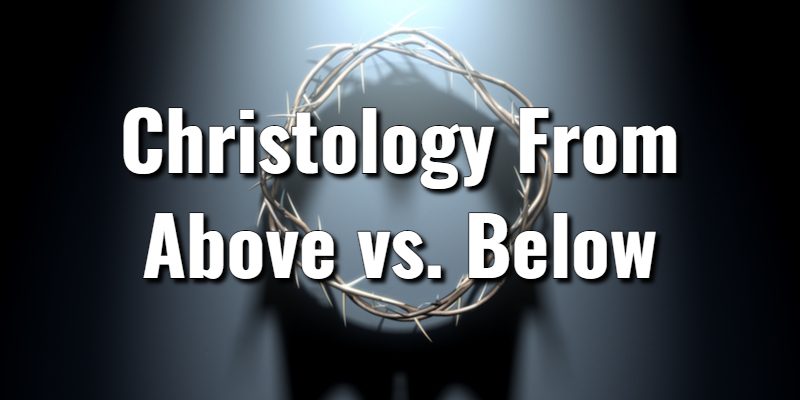The true nature of Jesus Christ is a topic of paramount importance to the Christian faith. If one doesn’t understand fully who Jesus truly was, one can’t understand the basic tenants that make up the foundation of Christianity. That’s why Christology, which is the study of Jesus Christ, is essential for every believer. Christology can take on many forms which look at Christ’s nature vs. life and ministry, role in the Bible, and much more. Given the different Christian denominations, Christology helps to delineate key positions held by past and current churches. The different Bible versions also play a role in Christology given that they were translated using different manuscripts, methods, and textual traditions. Christology was important in the early church as they practiced apologetics against the many false doctrines of the times. Throughout Christian history, Christology has helped to cement a firm foundation of mainstream Christian belief about who exactly Jesus was, what He did, and what it means for humanity. In this resource, Lord’s Library editors are going to compare Christology from above vs. below. It is our hope that this study will help you to contrast two distinct Christological methodologies which enable one to understand the human and divine nature of Jesus.
Christology From Above vs. Below
What is Christology from Above? Christology from Above Definition
When studying Christology “from above,” one starts from the perspective of the prologue of the Gospel of John (John 1:1-18). This Christological study starts with Jesus as the Word of God, the Logos, and explores how the second person of the Trinity took on flesh and became the man Jesus Christ. Naturally, this methodology shines the spotlight on Jesus’ divinity.
The prologue of the Gospel of John clearly states that the Word is God Himself and was crucial to the process of Creation. Here is Jesus’ divinity on full display. But it doesn’t stop there. In verse 14, John proceeds to tell the reader that the Word became flesh in the person of Jesus Christ, making Him fully human as well. Here is the Biblical basis for both the divine and human nature of Christ, as expressed through a from above Christology.
This is important, and how we see a majority of early Christian literature approach the identity of Christ. After all, if Jesus isn’t fully God, Christian theology begins to unravel at the seams. So, Christology from above is of utmost importance to one’s understanding of the faith.
This Christology is crucial because it helps one to see Jesus in the Old Testament. It reveals that Jesus doesn’t just appear in the New Testament. Here, He is placed right at the beginning, at Creation itself. From here, one can explore the other places where Jesus is seen throughout the Old Testament.
Christology from Above Defined
What is Christology from Below? Christology from Below Definition
When studying Christology “from below,” one starts from the perspective of Matthew’s Gospel, with Christ as a baby born to Mary and Joseph. This Christology starts looking at Jesus the man, then seeking to understand how this man from Nazareth was truly God Himself in the flesh. This Christology naturally emphasizes the human nature of Jesus.
This understanding of Jesus’ nature is crucial to the faith. Through Christology from below, Christians are able to truly grasp the importance of Jesus’ human nature and what it means in a salvific sense. Not only that, but comprehending Jesus’ human nature allows the body of Christ to relate to Him even more. This strengthens one’s personal relationship with Him.
One can see this Christology play out in the opening of the Gospel of Matthew. This gospel actually starts with the genealogy that brought forth Jesus: a clear emphasis on Jesus’ human nature playing out through the generations since Abraham. Matthew then goes on to explain Mary, Joseph, and Jesus’ physical birth. That birth was a very real, very physical event that clearly shows the reader how it was that Jesus came into the world just like the rest of humanity.
From here, Matthew reveals the divine nature of Christ as well. John’s testimony about Jesus, Jesus’ baptism, and even Jesus’ teachings reveal to one that Christ was fully divine as well. This is a prime example of Christology from below: starting with the human nature of Jesus and then revealing the divine.
Christology from Below Defined
Christology from Above vs. Christology from Below; What’s the Difference?

Christology from above vs. Christology from below have a sharply different focuses. The contrast is easily displayed by the Bible to show us that both are to be used in conjunction for edifying Bible study. If Christians don’t consider both, they run the risk of falling into a number of heresies brought upon by an overemphasis on one or the other.
For example, if one takes Christology from above on its own or places it in higher importance than Christology from below, then it’s easy to dampen the truth that Jesus was fully human as well as fully God. The opposite is true as well. So, these two Christological methods ultimately lead one to the same conclusion: that Jesus is both fully human and fully God. The difference is found in how one gets there.
We encourage the study of both as shown through the Gospels of Matthew and John respectively.
Lord's Library participates in affiliate programs. We may make a small commission from products purchased through this resource.
- Call for Christian Contributors: Lord’s Library Ministry Leaders Series Q2, 2025 - April 1, 2025
- The 6 Best 1 Corinthians Commentaries to Read in 2025 - March 24, 2025
- The 8 Best 1 Corinthians Bible Study Books to Read in 2025 - March 24, 2025













